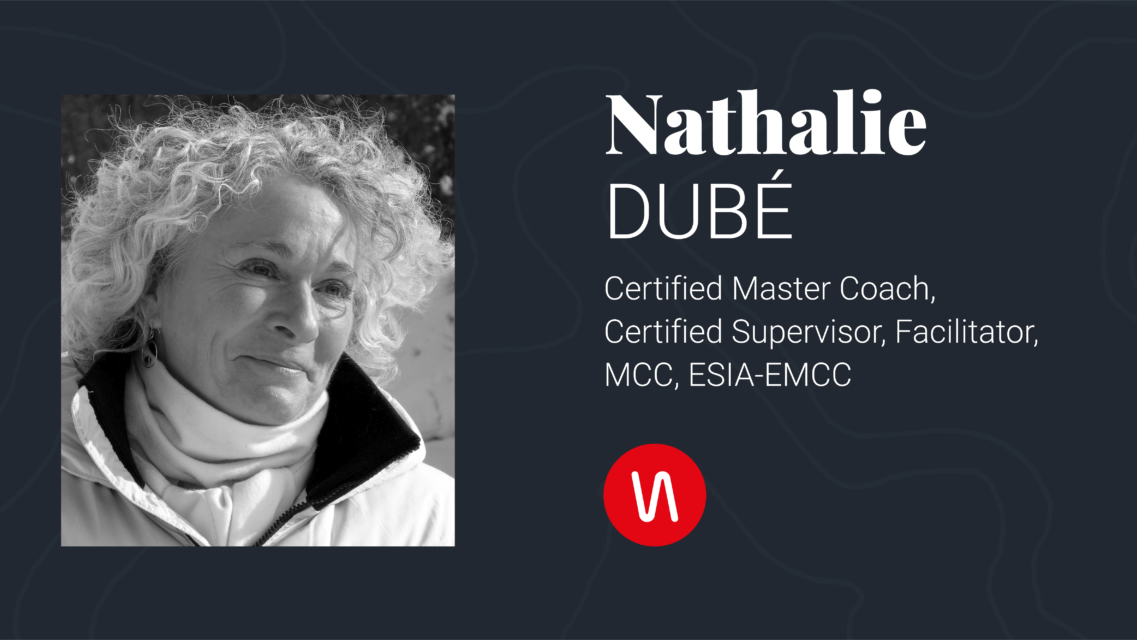Lately, there has been a lot of talk about immersive 360° technology for images and videos.
This technology is used to make panoramic videos and photos, similar to the images you can see on Google Street View. By using a 360° camera, a panoramic view of the real world can be captured in a single image. The image is then projected onto the screen of a computer or mobile device, allowing the viewer to control where they point their gaze. Users have access to a 360° view—they can look up, down or sideways.
This immersive technology is a very effective training tool. It makes it possible to simulate real tasks by interacting with content in a very realistic environment. Interactive elements like questions, information bubbles and augmented reality objects can also be added to the environment. Training that uses this technology is also engaging and motivating for learners, who get a more concrete sense of the value of the material they are learning. Augmented reality can further enhance the impact of a demonstration, allowing employees to easily transfer the knowledge they learned into their real-life work context.
Example of an online training class using 360° immersive and interactive technology via Storyline.
360° and Virtual Reality
Unlike virtual reality, which requires a helmet, 360° content can be viewed without special equipment. Activities can be performed using only a mouse or a touch screen. However, the most compelling way for users to experience 360° content is undoubtedly with a smartphone, which also includes an accelerometer that senses how tilted the device is. All you have to do is move the screen to change the field of view!
A mobile device can also be used with special glasses, like Google Cardboard glasses, to explore 360° content simply by turning your head. With this minimalist piece of equipment, users can enjoy a higher level of immersion approaching the level achieved by virtual reality.
Now let’s take a look at the huge potential of 360° applications in digital learning environments.
Onboarding and Integrating New Employees
Onboarding and integration present a unique opportunity for creating a sense of engagement among new employees. The onboarding process can be facilitated with dynamic and instructive activities that quickly put new employees in an action mindset.
A virtual tour of a plant, office space or remote worksite can help employees become familiar with their new workplace before they ever set foot there.
By adding interactive elements, the tour can also become:
- An exploration of the company’s history
- A way of introducing employees to their colleagues
- A demonstration of good occupational health and safety practices
- A presentation of fun facts about the company’s culture
Employers can instill an even greater sense of belonging among new hires by using a personalized approach. New employees will then be more likely to perceive the environment as warm and friendly. Some companies also choose to split integration activities into short 360° segments to avoid cognitive overload and allow new knowledge to be applied more easily.

While it’s not essential to incorporate a game into the integration process, 360° content lends itself perfectly to this sort of approach. A fun and playful onboarding process conveys a joyful work culture. For example, a 360° tour could feature a treasure hunt with riddles or clues that need to be solved or photographed by the employee.
Practical Experience Is Essential
Activities that use 360° technology rarely leave learners indifferent. The technology allows them to be the protagonists in a captivating, interactive story, and can bring to life personalized education that changes and reacts to each person’s decisions and behaviour.
Here are some training contexts that lend themselves well to this approach:
- What to do in an emergency (fire, spill, etc.)
- Good occupational health and safety practices (e.g. operation of plant equipment)
- Communication and team building (e.g. counselling, managing difficult clients)
- Decision-making in high-risk and hazardous environments
- Individual and team-based problem solving
This technology also allows processes that are rarely encountered to be practised in a safe environment. By repeating them as often as necessary, employees can internalize the processes and integrate them more easily into their practice.
Example of an online training class demonstrating how to react in case of a fire alarm using 360° interactive technology via Storyline.
Why Is the Technology So Effective?
- No special equipment or technical supervision is required.
- There is no limit on the number of individuals who can do the training at the same time.
- Activities can be carried out at a time and place that is convenient for each person.
- 360° video can effectively render areas and locations that are very big, dangerous, or expensive and difficult to access.
- Research shows that 360° learning environments are highly valued by learners—they feel that their learning is facilitated by doing concrete activities where they are actively making decisions.
Contact Us!
Whether you’re looking to onboard new employees or help your existing staff practice different processes in difficult, remote or dangerous environments, you can easily apply your existing training experience to the interactive 360° medium. The Novaconcept team will be there every step of the way to help you get the most out of this innovative approach, allowing everyone to experience immersive activities that create vivid and lasting memories.
This site is protected by reCAPTCHA and the Google Privacy Policy and the the Terms of Services apply.








